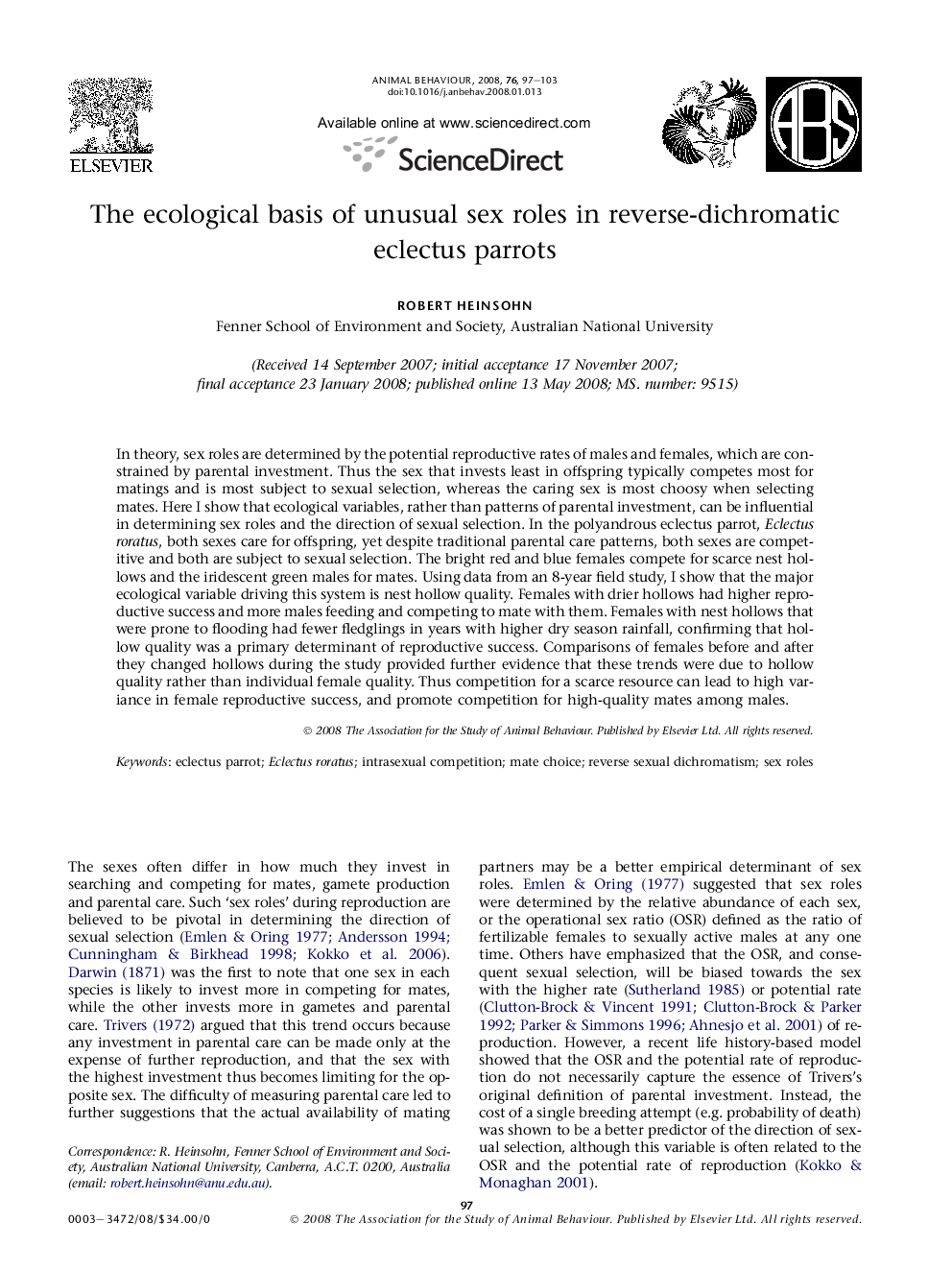| کد مقاله | کد نشریه | سال انتشار | مقاله انگلیسی | نسخه تمام متن |
|---|---|---|---|---|
| 2418001 | 1104334 | 2008 | 7 صفحه PDF | دانلود رایگان |

In theory, sex roles are determined by the potential reproductive rates of males and females, which are constrained by parental investment. Thus the sex that invests least in offspring typically competes most for matings and is most subject to sexual selection, whereas the caring sex is most choosy when selecting mates. Here I show that ecological variables, rather than patterns of parental investment, can be influential in determining sex roles and the direction of sexual selection. In the polyandrous eclectus parrot, Eclectus roratus, both sexes care for offspring, yet despite traditional parental care patterns, both sexes are competitive and both are subject to sexual selection. The bright red and blue females compete for scarce nest hollows and the iridescent green males for mates. Using data from an 8-year field study, I show that the major ecological variable driving this system is nest hollow quality. Females with drier hollows had higher reproductive success and more males feeding and competing to mate with them. Females with nest hollows that were prone to flooding had fewer fledglings in years with higher dry season rainfall, confirming that hollow quality was a primary determinant of reproductive success. Comparisons of females before and after they changed hollows during the study provided further evidence that these trends were due to hollow quality rather than individual female quality. Thus competition for a scarce resource can lead to high variance in female reproductive success, and promote competition for high-quality mates among males.
Journal: Animal Behaviour - Volume 76, Issue 1, July 2008, Pages 97–103